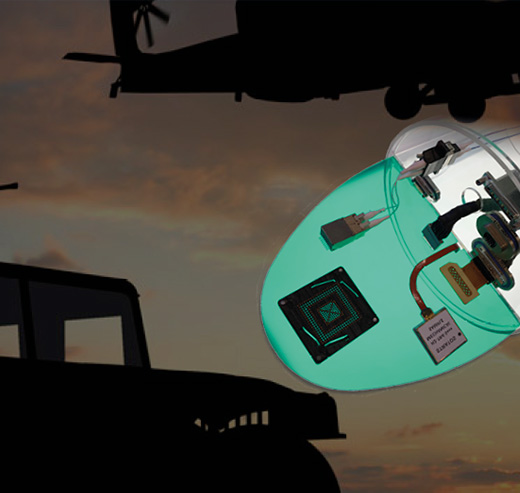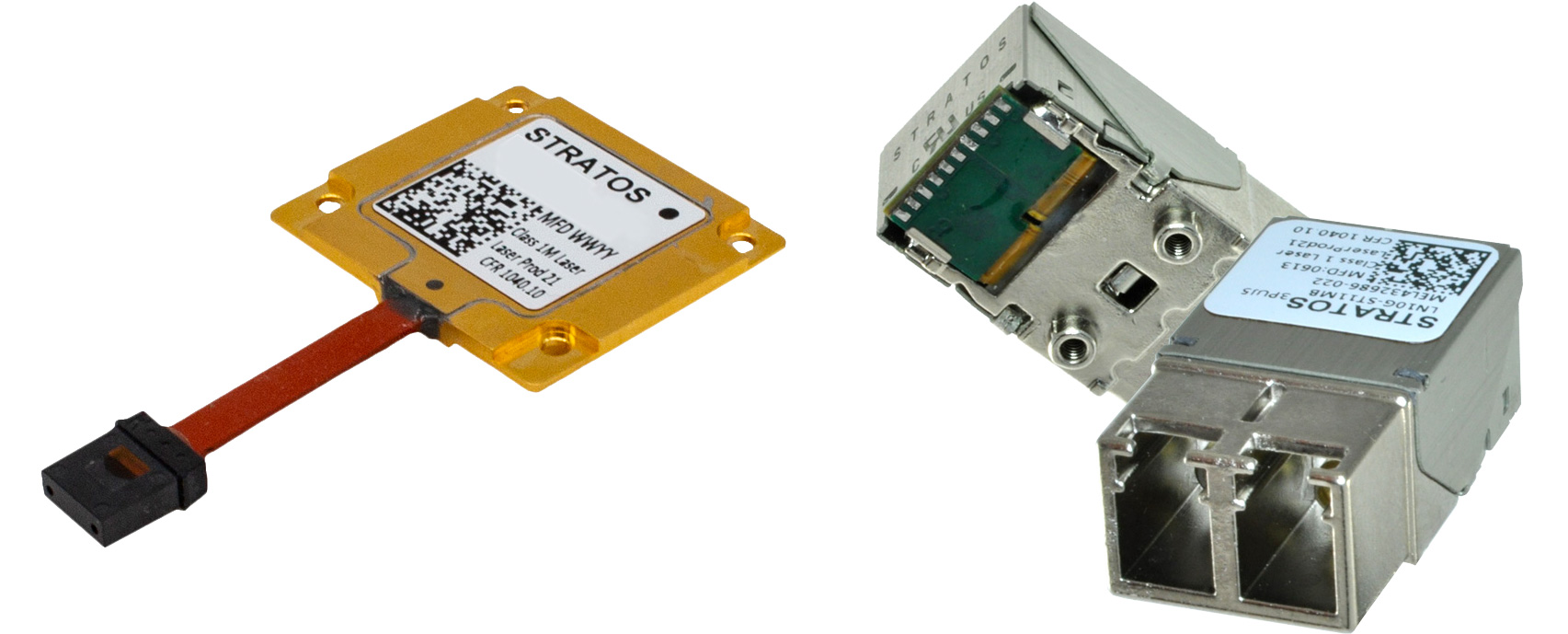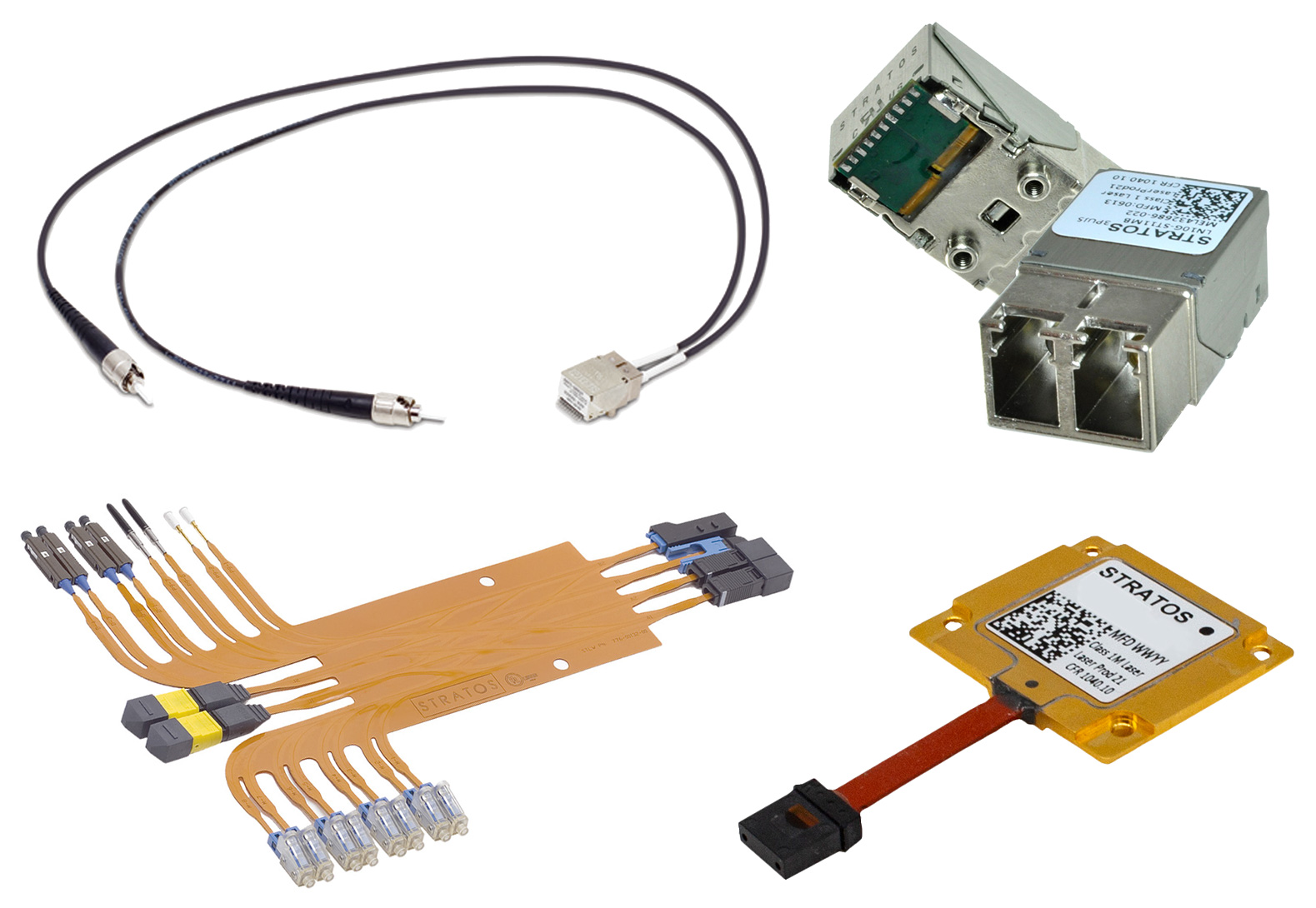
For military and aerospace, communications and networking SWaP is often a key focus. Today’s systems generate more and more data, and it needs to be moved quickly and efficiently, without technical bottlenecks holding up real-time operation. While copper wires have traditionally been used, they are increasingly being replaced by fiber optics and by wireless connections. This article will look at how fiber can provide the high throughput required – while delivering the combination of low SWaP per bit of digital data, and has the ability to meet tough environmental and operational demands.
Fiber vs Copper
For high-reliability applications within military and aerospace applications, three key factors need to be considered: robustness, size and weight and performance.
When you're a mile above the earth, reliability is paramount. Fiber is less vulnerable to environmental factors such as temperature, electromagnetic interference and weather. Fiber also has a longer lifetime, approximately 30-50 years, which reduces maintenance and overall operating costs.
Fiber optics overall weight and size is considerably less than copper. A fiber cable weighs around 4 lbs/1000 ft as compared to 39 lbs/1000 ft weight of copper cable. The diameter size of a fiber optic cables is considerably less as well. For example, Cat 5e cable copper cabling takes over 100 times more space than a comparable amount of fiber optic ribbon.
Fiber optic performance again beats copper cabling. The bandwidth is much larger and has a much lower attenuation than copper. The bandwidth throughput of fiber is over 60 Tbps compared to just 10 Gbps for copper Cat 5e cabling. And the need for network repeaters is every ~31 miles with fiber as oppose to every ~5 miles with copper.
When considering reliability, size and weight and performance, fiber optics is the best choice.
References:
https://www.tutorialspoint.com/Comparison-of-Fiber-Optics-and-Copper-Wire
Stratos Optical Connectivity Solutions
Discover the PossibilitiesWhen High-Reliability Transceivers Make Sense
To get the benefits of fiber, many customers may start by looking at transceivers designed for the telecoms market. They might be lower cost and possibly higher speed, but they are not as robust or well-designed as a solution that is designed specifically for military and aerospace use. For customers who are looking for the best combination of quality, size and reliability, only a solution designed for the military and aerospace markets can deliver all of the key factors.
Figure 1.Stratos optical connectivity solutions

In terms of size, many fiber optic transceivers are supplied in a standard footprint and at a first glance may seem that only one size is possible for a particular application. However, manufacturers such as Cinch Connectivity Solutions can deliver transceivers which are much smaller, enabling the overall dimensions of a solution to be reduced. Many of Cinch’s transceivers are half the size of typical competitive products or smaller.
To make sure the overall system can fully benefit from these size reductions, considering a hybrid or small footprint transceiver as early as possible in the design process will ensure that the optimum footprint device is used.
Small fiber transceivers offer many benefits, but they may not work for everyone. For example, there may be existing board designs that requires a transceiver of a certain size. In this situation, Cinch can provide custom built transceivers, that are designed with a specific size in mind that also use standard interfaces and are tested in accordance with existing military specifications. A custom Cinch solution allows you to stay on schedule and on budget.
There are some markets that demand more specific requirements than standard commercial products, but aren't as specialized as rockets or drones. These sectors include heavy industry, oil and gas, and medical applications - all of which have an increasing requirement for high speed communications throughout most organizations. For this kind of use case, Cinch can supply transceivers that can be customized and made to specific specifications and size as commercial transceivers and still be priced competitively and smaller than typical telecoms products.
How Cinch lowers SWaP
To reduce SWaP, Cinch uses higher grade components in its transceivers than the usual commercial telecoms industry products. Combined with careful engineering, this enables Cinch to maximize space inside the transceiver, and create a smaller product that is lighter and requires less power.
Another alternative is Cinch’s hybrid transceivers, built using die mounted on a ceramic board, then wire bonded together. This achieves a particularly compact and reliable transceiver design that meets the needs of the most demanding military and aerospace applications.
Thermal management is another area where Cinch excels. Extensive analysis by Cinch in the design process, choosing components that work together within the required temperature parameters allows Cinch to verify that everything meets the necessary specification through an extensive testing and qualification process.
The key to achieving results is unrelenting attention to detail and extremely high quality-control in the assembly process - each unit produced goes through rigorous testing to assure performance over temperature, vibration and time. Cinch has developed its own manufacturing equipment, which together with many years of experience, enables it to design and build smaller and more efficient transceivers.
Cinch's Fiber Flex Optical Circuits
Find a SolutionTo give just one example, Cinch’s Low Rider Transceiver range provides options from 155 Mbps up to 10 Gbps, in a low-profile design with a maximum height of 0.386 inches (9.8mm). The transceivers operate over an industrial temperature range of -40°C to 85°C, and are certified for use in harsh environments.
Another example is the H2-TR4 Quad Hybrid Transceiver, which includes four independent transmit and receive ports at 2.125 Gbps each with a typical power consumption of less than 1W. It is provided in a compact, highly-ruggedized package, with a small footprint just one inch (25.4mm) square, and a maximum height of less than 0.285 inches (7.24mm). The transceiver includes an integrated FiberFlex cable terminated into an industry standard 1x12 MT connector, and can also be customized to have different FiberFlex lengths, custom FiberFlex routing, or to use alternate types of fiber terminals such as ST, SC or MIL-T-29504.
Conclusion
In summary, many military and aerospace customers need rugged, reliable transceivers, which can provide the best combination of SWaP characteristics. For these applications, a transceiver designed specifically with SWaP in mind is often the best solution – achieving the smallest footprint available, along with other qualities such as an extended temperature range and optimal customization.
For these demanding applications, Cinch provides the necessary expertise in the design and manufacturing of small footprint transceivers, and has a long history of successful implementation in military and aerospace applications.
Figure 2.Fiber flex and H2-TR4 Quad Hybrid Transceiver

Explore Bel's Variety of Optical Connectivity Solutions
Stratos brand of optical connectivity products, designed and manufactured by Cinch Connectivity Solutions, is globally recognized as highly reliable, cost-effective, and provides optical connectivity solutions that are virtually immune to dust, mud, oil, water, and other contaminants.


